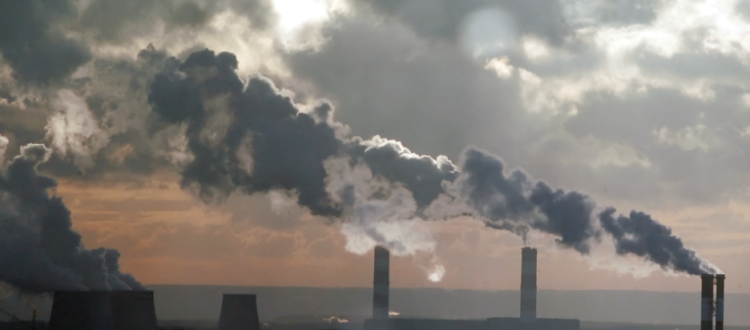UNEP’S 2022 REPORT ON EMISSIONS: CURRENT EFFORTS ARE INSUFFICIENT AND WILL PUSH TEMPERATURE RISE TO 2.8°C
The United Nations Environment Program (UNEP) published the 2022 Emissions Gap Report one week before the start of COP27.
The Emission Gap Report 2022 analyzes the gap between estimated greenhouse gas emissions in 2030 if countries implement the mitigation commitments outlined in their national commitment plans (the so-called Nationally Determined Contributions or NDCs) and the global emission levels needed to keep global temperatures below 2°C or preferably 1.5°C, as required by the Paris Agreement. This difference between “where we are likely to be and where we should be” is known as the emissions “gap.”
Opening the presentation of the UNEP report, UN Secretary-General Antonio Guterres said that the window for addressing the climate crisis is closing. Greenhouse gas emissions must be reduced by 45 percent over the next eight years, but the UN report reminds us that our efforts are currently highly insufficient. Guterres remarked that we are heading for a global catastrophe and must close the emissions gap before it is too late.
In terms of greenhouse gas emissions, 2021 may represent a new record: indeed total emissions in 2021 exceeded 2019 levels. The positive news is that the rate of emissions growth has slowed from the past decade, decreasing from 2.6 percent between 2000 and 2009 to 1.1 percent in 2010-2019.
Moreover, despite the call made in Glasgow for strengthening the National Determined Contribution (NDC) targets by 2030, progress since COP26 is severely inadequate.
Collectively, Paris Agreement Parties are not on track to meet their NDCs, causing an implementation gap, the difference between projected emissions based on current policies and projected emissions based on full NDC implementation.
To meet Paris Agreement target, the countries will need to reduce greenhouse gas emissions to unprecedented levels over the next eight years.
Indeed, 30% reduction in current emissions by 2030 is needed to keep the global temperature below 2°C degrees and a 45% reduction to keep the temperature below 1.5°C degrees. In addition, emissions will need to continue declining rapidly after 2030 to avoid depleting the remaining atmospheric carbon budget.
The lack of progress leaves the world on the path to global warming well above the Paris Agreement target. The climate policies currently in place will result in the rise of global temperature above 2 C° degrees, reaching the unacceptable 2.8 C° threshold.
The Report also explains how national commitments contained in the NDCs presented since COP26 would bring global temperatures to 2.6°C or 2.4°C (the difference is whether unconditional or conditional commitments are considered), a threshold that is too high and would make it impossible to halt the climate crisis.
Global greenhouse gas emissions under different scenarios and emissions gaps in 2030
Source: UNEP Emissions Gap Report 2022
It is true that implementation of all NDCs and net-zero pledges, made by an increasing number of countries, could keep temperatures within 1.8°C. However, the UNEP Report reminds us that this scenario is not credible and that the feasibility of the net-zero pledges remains highly uncertain. Indeed, The majority of G20 members (all except Mexico) have communicated net-zero pledges, but these net-zero targets vary in a number of important features, including: legal status, timeline, consideration of the principle of justice and equity, information on which sectors and GHGs are in scope, information on the use of international offsets, detail on the role of carbon removal, and details of planning, reviewing, and reporting on the targets.
In light of the size of the current emissions gap, a large-scale, rapid and systemic transformation is needed to achieve the goals of the Paris Agreement, starting with the electricity supply, industry, construction, transportation, food, and financial sectors. The transition to a zero-emissions economy has commenced, but it must go much faster and be more ambitious to keep global temperatures below 1.5°C degrees.
As UNEP reminds us, incremental change is no longer an option: extensive systemic transformations at economic level are needed to keep alive the possibility of limiting global warming within 1.5°C.
As UNEP Executive Director Inger Andersen emphasized, every fraction of a degree matters, so does every ton of CO2 emissions reduced. The Director further stated, “I know some people think it cannot be done within the next 8 years, but we cannot say we have failed before we have even tried. We have to try.”
Details of G20 members’ net zero targets
Source: UNEP Emissions Gap Report 2022
Article by Margherita Barbieri, member of Climate and Advocacy Section
Cover photo: source Reuters

